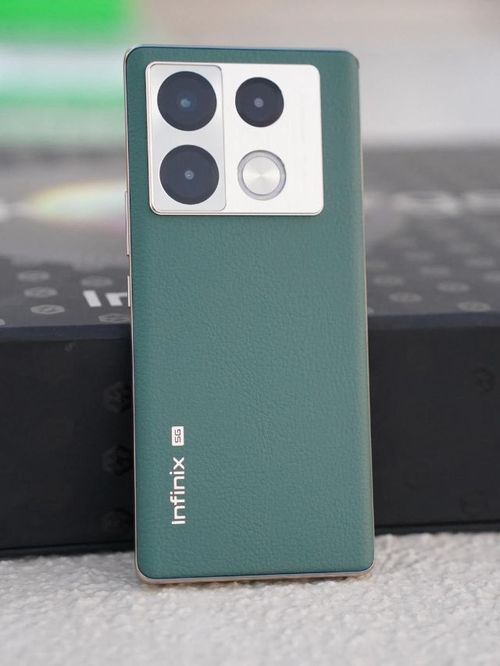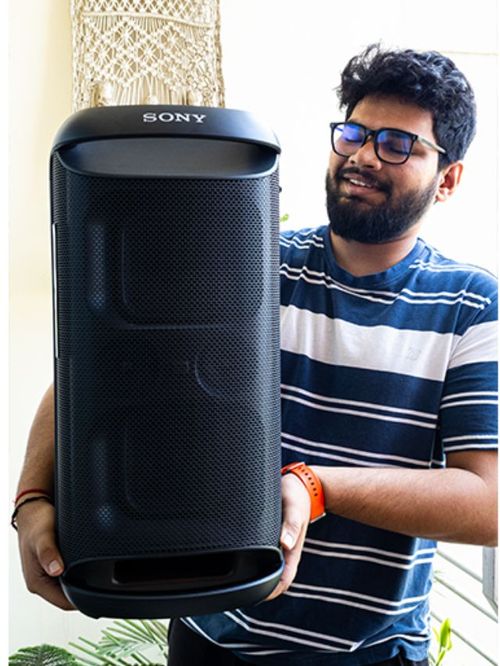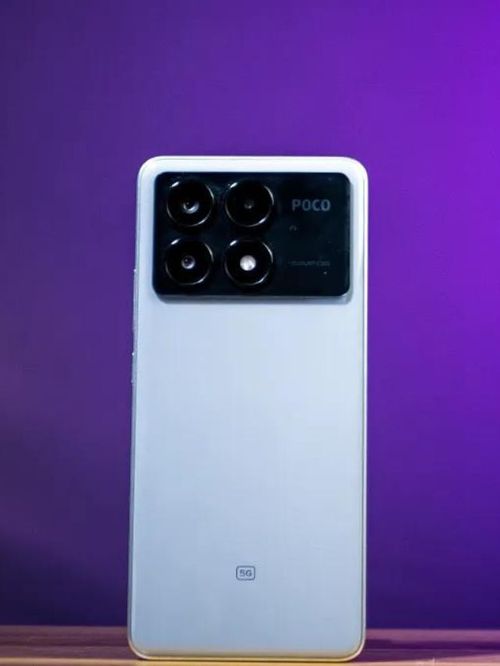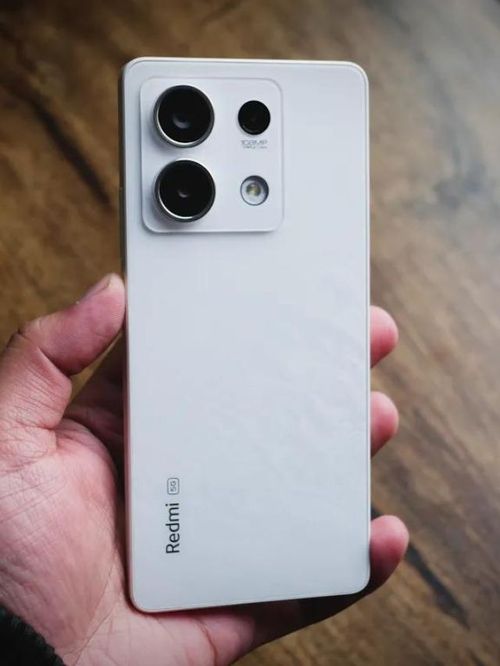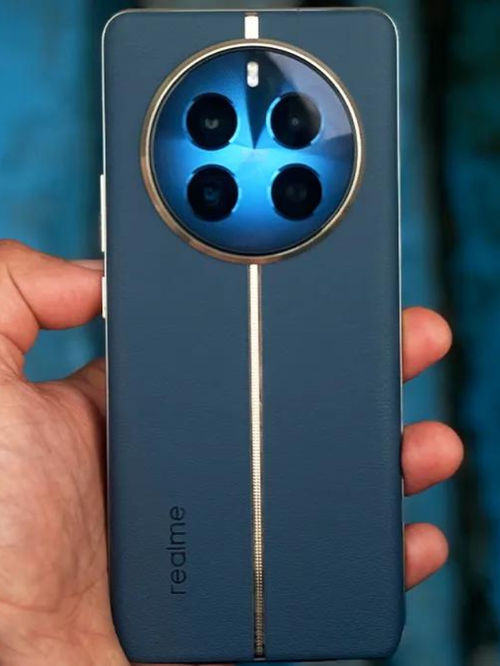- The Realme GT 3 is powered by a Snapdragon 8+ Gen 1 SoC
- It comes with a 4600mAh battery and a 240W charger
- It sports a multi-coloured notification LED at the back
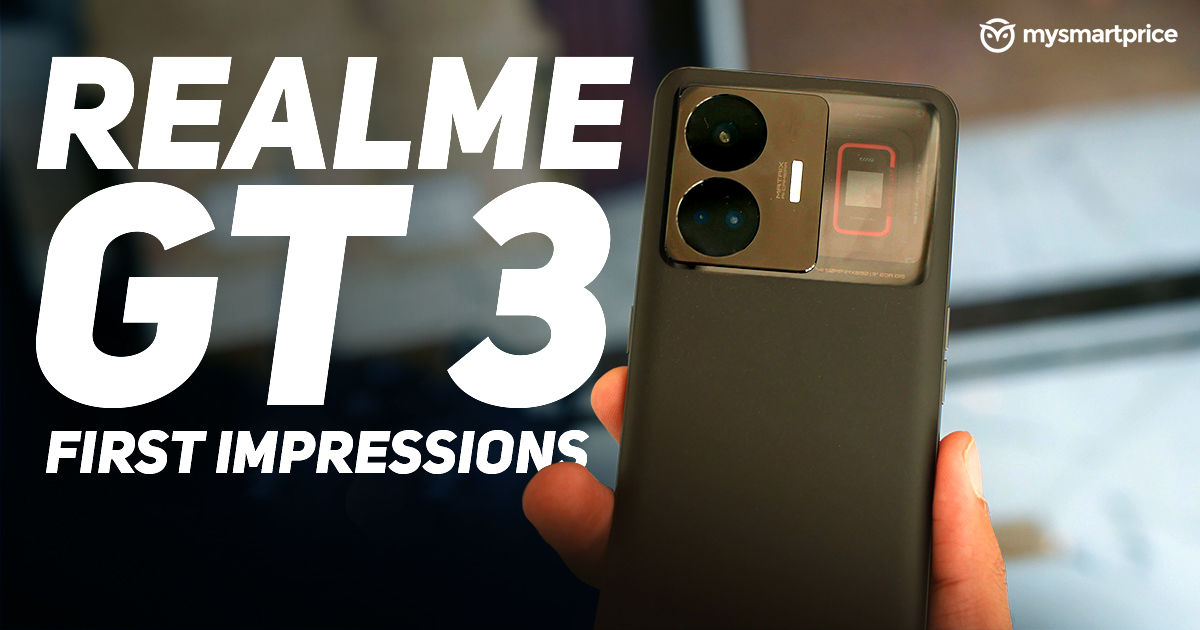
Whenever we feel like, “yes, this is the extent a technology can be amped up to,” phone makers find a way to one-up it. And this time, it comes from the house of Realme. The company’s latest addition in the ‘GT’ series, the Realme GT 3, packs some very riveting features. The device comes with a whopping 240W charger, a multi-colour notification LED strip at the back, Qualcomm Snapdragon 8+ Gen 1 chipset, and more. Currently, there’s no word on whether the device will make it to the country. Nevertheless, we spent some time with the Realme GT 3, and here are our first impressions.
Realme GT 3 240W First Impressions: Design and build quality
Realme’s approach with its line of smartphones has always been different. The company tends to put more spotlight on the design. This consistency can be seen on the Realme GT 3 too. The phone is available in two colours: Booster Black and Pulse White. We got to check out the former, which looks subtle but stunning. The Realme GT 3’s back panel features a matte finish and does not attract any smudges. The phone has some heft to it, weighing 199 grams. Ergonomic-wise, the device feels good to hold with curved back panels that help. The camera island up top is slightly wider than usual.
This is thanks to the multi-colour notification LED residing next to it. Realme likes to call this design approach — ‘Pulse Interface Design’. It has a vertically aligned rectangle with an LED strip that lights up whenever you receive a notification. It also integrates the company slogan right next to it with the words ‘Dare To Leap’ embossed. The interface showcases a few other features of the smartphone, including a very visible Snapdragon 8+ Gen 1 chipset design on it. The triple camera setup is accompanied by a flashlight, all sitting on a metal housing. We’ll get into the camera details shortly.
The bottom portion of the device has a SIM tray, secondary microphone, speaker grille, and a USB Type-C port for charging. The left side holds in place the volume rockers while the right side has the power button. The top portion of the Realme GT 3 features an IR blaster, which is the first time for the company. It also has a primary microphone at the top.
The front of the Realme GT 3 is graced by a 6.74-inch OLED display with a resolution of 2772×1240 pixels. The device benefits from the COP (Chip on Pi) display packaging, which essentially means the flexible OLED panel is tucked underneath the edges of the phone, yielding very narrow bezels. As a result, the GT 3’s display has a screen-to-body ratio of 93.69 per cent. The display refreshes at 144Hz with a peak instantaneous sample rate of 1500Hz. The hole-punch cutout at the top of the panel holds in place a selfie camera. In addition, the panel uses Dragontrail Star 2 for protection against unfortunate drops.

Realme GT 3 240W First Impressions: Hardware and software
As mentioned, the Realme GT 3 is powered by a Qualcomm Snapdragon 8+ Gen 1 chipset. It’ll be interesting to see how the device will be priced if it makes its way into the Indian market since the OnePlus 11R has a rather attractive price tag. The Realme GT 3 also comes with up to 16GB of LPPDR5 RAM, though storage variants have not yet been revealed. One thing’s for sure, though – it’ll be integrating UFS 3.1 for all the available variants.
Realme also stressed more on its cooling system in the GT 3. This is said to be one of its largest plates for cooling. It uses Stainless Steel Vapor Cooling System Max 2.0 to maintain optimal temperatures.

The Realme GT 3 comes with Realme UI 4.0 based on Android 13 out of the box. We didn’t get enough time to test out the entirety of the software, but from the looks, there’s not a lot of exclusivity for the device as yet. The notification LED strip at the back is something that’s new, and it can be controlled via settings. For some odd reason, it is placed inside ‘’Wallpapers and style’’, instead of ‘’Notification and status bar’’. It has different modes like ‘Breathing’, ‘Cycle’, and more. You can set a particular colour for an app, so you know when to reach out for your device and when not to — provided you place it face down.
The GT 3 comes with a 4,600mAh battery, and while that may raise a few eyebrows, Realme has mentioned that it can handle high-power input better when compared to your run-of-the-mill cell of a similar capacity. It also takes up less space, ensuring the phone is slick.
But what really might prove to be a game-changer is that crazy 240W Gallium nitride (GaN) charger which uses dual chipsets for power instead of one. This electrical monstrosity is carried to the phone via a 12A cable, and the claims are extremely bold – 50 per cent in four minutes and 100 per cent in 9.5 minutes.
We witnessed the battery percentage go up, and it was nuts. The video embedded above should help you visualise it. Realme also plans on introducing Intelligent Scene Recognition for charging, which optimises charging speeds according to different scenarios. Yep, it has nothing to do with the camera.
The Realme GT 3 sports a triple-camera setup led by a 50-megapixel primary camera with OIS. It uses the Sony IMX890 sensors, the same as used on the OnePlus 11R. Besides this, it also comes with an 8-megapixel ultra-wide angle camera and a 2-megapixel microscope lens — previously seen on the Realme GT 2 Pro. In addition, the front has a 16-megapixel shooter for selfies.

Realme GT 3: Initial thoughts
For now, Realme has kept hush about the GT 3’s entrance in India. However, on the surface, it appears to be a decent package. The Pulse Interface Design seems unique and practical. The Snapdragon 8+ Gen 1 is a proven performer, but the 240W charging, although crazy-fast, has got to a point where one might think, ‘how much is too much?’
It’s too early for us to form a strong opinion about it, given the limited time we spent with the Realme GT 3, but it sure as hell is attractive.

















